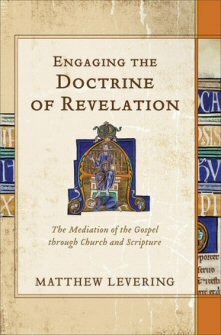How do human beings today receive divine revelation? Matthew Levering explores this question in his monograph Engaging the Doctrine of Revelation, which is available for only $7.99 through the end of November.
Here Levering explains what Aquinas, Balthasar, and Wright say about the role of the Church in revelation:
Aquinas, Balthasar, and Wright help us to see why divine revelation and the Church are intrinsically bound together; the Church is no mere receptacle. As Aquinas makes clear, the revelation of God takes place through the visible and invisible missions of the Son and Spirit. Absent the vibrant theology of the trinitarian missions that we find in Aquinas (and in Scripture), the theocentric character of revelation would seem to exclude the active role of the Church, lest mere humans be situated in the place of God or lest revelation be imagined as the Church’s work over the centuries rather than as God’s work in Christ and the Spirit. The way to understand the active place of the Church in divine revelation is to reflect upon the missions of the Son and Spirit.
Matthew Levering – Engaging the Doctrine of Revelation: The Mediation of the Gospel through Church and Scripture
Balthasar identifies Christ’s kenotic love and obedience as the center of revelation, so that revelation is in a certain sense coextensive with Christ’s “person,” Christ’s supreme mission-consciousness. The Church is the community of human subjects who become persons by embracing their missions in Christ. As a community of persons in Christ, built up by the Eucharist, the Church mediates and participates in his salvific mission by the power of the Holy Spirit.





